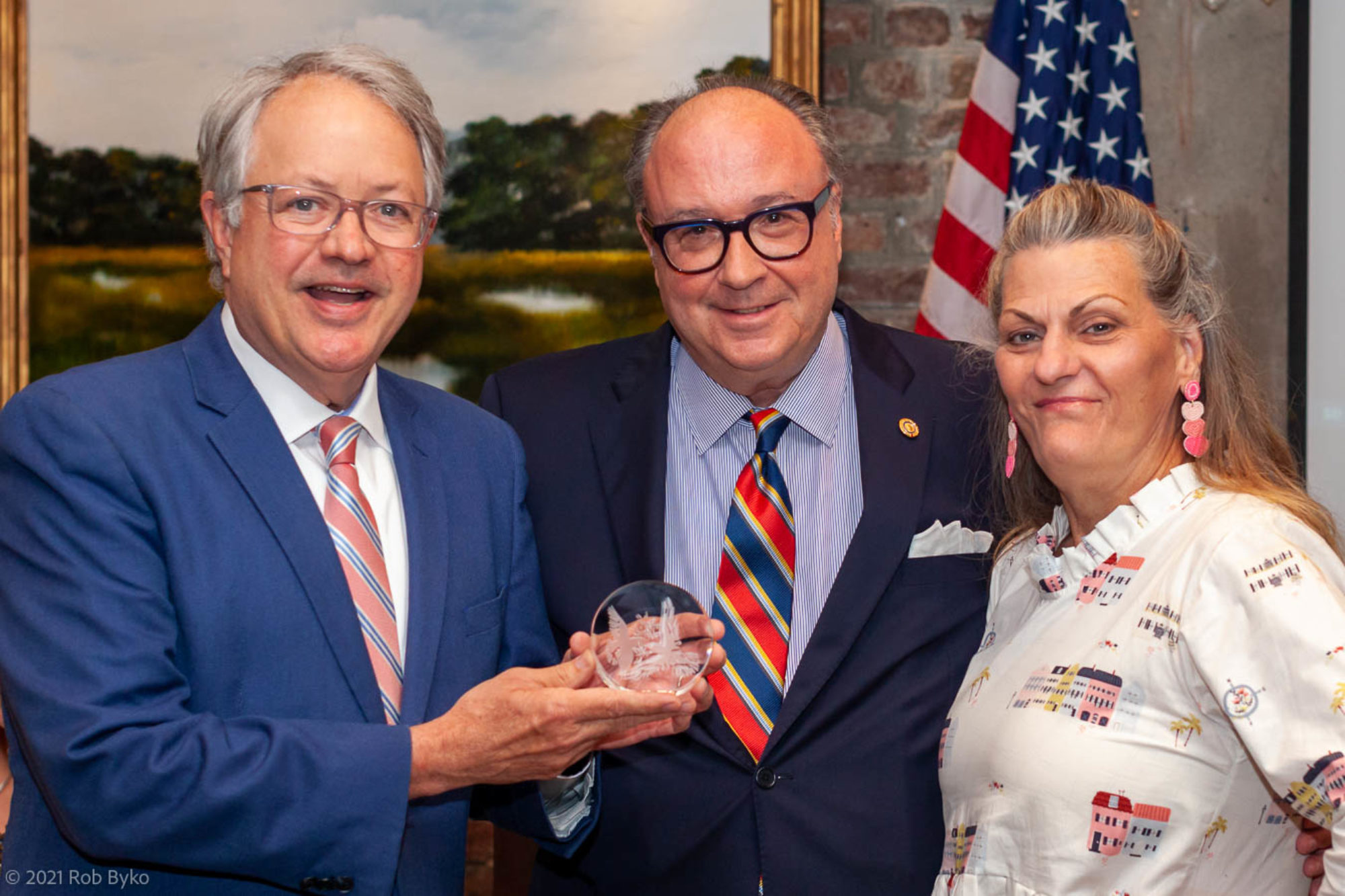January 3, 2017: What happens to the spirit, the rhythm, the history and the culture of our old established Charleston neighborhoods as they are undergoing development and change? While we are committed to preserving the architectural uniqueness, beauty and charm that characterizes Charleston’s neighborhood structures, what’s happening everyday, on the ground, under the construction cranes? Most important to Rotary speaker and well-known photographer Jack Alterman, what’s happening to the people who have been a part of these once vital community areas and how do we pay attention to these neighborhoods in transition?
Jack, a life-long Charleston resident, began wondering about these things as he watched the many changes occurring in the city’s East side and remembered the East side as it was when he drove through it as a child. He decided to try to find out more about the current lives and conditions of this historic area and to record history in the making as the vast changes of development occur. He didn’t settle for just looking at the physical differences in new or restored buildings, however, but rather decided to learn about the people impacted by these changes. He decided to use his talent for photography to engage its residents by taking their pictures and listening to the stories of their lives in a rapidly changing historic neighborhood.
To entice participants, Jack set up a small portable “studio” to cause curious residents to stop, talk and be photographed. Henry, his first subject, compared the neighborhood of today to former times and noted that while it is now “safer,” people are more “remote,” with less personal interaction. That loss of everyday communication—“people don’t talk anymore”– was echoed by another resident who stopped by, agreed to be photographed and who began telling stories of the area. These two faces were the beginnings of the project that would cause thousands of Charlestonians to become more aware of the East side.
As word of Jack’s picture-taking spread, more and more East side neighbors began appearing at the makeshift studio to be photographed and to talk to the man so interested in their neighborhood and in them. Eventually, dozens of 4 foot by 5 foot weatherproof photographs of residents were attached to a school fence on Columbus Street where passing motorists could see the faces of the East side—faces that represented broad ethnicity including Estonian, Egyptian, African-American and Jamaican heritages. Rather than these city blocks of the East side being merely a part of an anonymous commute, Jack’s photographs literally put a face on a historic neighborhood as it goes through an era of change.
The thousands of passing motorists weren’t the only ones paying attention. Pedestrians began walking by the fence, looking at the pictures, commenting on the faces, seeing the neighborhood as living people with histories and stories; giving the East side the dignity of a place where lives are lived everyday, even in the face of enormous change.
Jack noted that this kind of project can be done anywhere and talked about specific buildings on King Street that have anchored that area for generations. Development has taken (or will soon) the old furniture, hardware, pawn and lumber stores that long time Charleston residents have loved and patronized. Jack Alterman, however, has shown that capturing photographs of the people who owned, lived and worked in these old buildings helps tell the story of the city and honors the lives and work of the people who have so impacted Charleston.
As development continues and the question of the cost of progress on the fabric of a community continues in its unending debate, Jack Alterman found a way to create interest, conversation and attention around the people in a changing neighborhood. For the commuters and passers-by, the project is a learning experience and an opportunity for appreciation of part of our history. And for some residents like Henry, there is the sense that he and his East side neighbors “don’t feel so invisible anymore.”
— Cheryl Kaynard, Keyway Committee


